St. Pantaleon
St Pantaleon came from Nicomedia, near the Black Sea, in Asia.
He was such a famous doctor that the Emperor himself chose him for his own doctor. Pantaleon was a Christian, but the bad influence from the pagan court caused him to give up his Christian faith entirely.
When the Emperor Diocletian began his persecution, Pantaleon at once gave away everything he owned to the poor. Not long afterwards, he was accused of being a Christian. He was given the choice of denying his Faith or being put to death. No torture could force Pantaleon to deny his Faith.
There has been strong devotion in past ages to this Saint. In the East he is called the "Great Martyr and Wonder-worker." Saint Pantaleon's feast day is July 27th.
He was such a famous doctor that the Emperor himself chose him for his own doctor. Pantaleon was a Christian, but the bad influence from the pagan court caused him to give up his Christian faith entirely.
A holy priest named Hermolaos made him realize what a sin he had committed. Pantaleon listened to him, detested his sin and joined the Church once more. To make up for what he had done, he greatly desired to suffer and die for Jesus. In the meantime, he imitated Our Lord's charity by taking care of poor sick people without any charge for his medical services.
There has been strong devotion in past ages to this Saint. In the East he is called the "Great Martyr and Wonder-worker." Saint Pantaleon's feast day is July 27th.
According to the martyrologies, Pantaleon was the son of a rich pagan, Eustorgius of Nicomedia, and had been instructed in Christianity by his Christian mother, Saint Eubula; however, after her death he fell away from the Christian church, while he studied medicine with a renowned physician Euphrosinos; under the patronage of Euphrosinos he became physician to the Emperor Maximian or Galerius.[2]
He was won back to Christianity by Saint Hermolaus (characterized as a bishop of the church at Nicomedia in the later literature), who convinced him that Christ was the better physician, signalling the significance of the exemplum of Pantaleon that faith is to be trusted over medical advice, marking the direction European medicine was to take until the 16th century.
St. Alphonsus Liguori wrote regarding this incident:
He studied medicine with such success, that the Emperor Maximian appointed him his physician. One day as our saint was discoursing with a holy priest named Hermolaus, the latter, after praising the study of medicine, concluded thus: "But, my friend, of what use are all thy acquirements in this art, since thou art ignorant of the science of salvation?[3]
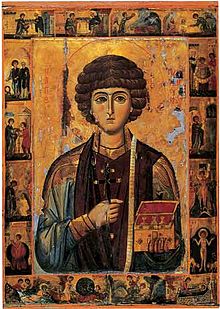
Icon of Saint Panteleimon, with scenes from his life, 13th century (Saint Catherine's Monastery, Mount Sinai).
By miraculously healing a blind man by invoking the name of Jesus over him, Pantaleon converted his father, upon whose death he came into possession of a large fortune, but freed his slaves and, distributing his wealth among the poor, developed a great reputation in Nicomedia. Envious colleagues denounced him to the emperor during the Diocletian persecution. The emperor wished to save him and sought to persuade him to apostasy. Pantaleon, however, openly confessed his faith, and as proof that Christ is the true God, he healed a paralytic. Notwithstanding this, he was condemned to death by the emperor, who regarded the miracle as an exhibition of magic.
According to the later hagiography, Pantaleon's flesh was first burned with torches, whereupon Christ appeared to all in the form of Hermolaus to strengthen and heal Pantaleon. The torches were extinguished. Then a bath of molten lead was prepared; when the apparition of Christ stepped into the cauldron with him, the fire went out and the lead became cold. Pantaleon was now thrown into the sea, loaded with a great stone, which floated. He was thrown to wild beasts, but these fawned upon him and could not be forced away until he had blessed them. He was bound on the wheel, but the ropes snapped, and the wheel broke. An attempt was made to behead him, but the sword bent, and the executioners were converted to Christianity.
Pantaleon implored Heaven to forgive them, for which reason he also received the name of Panteleimon ("mercy for everyone" or "all-compassionate"). It was not until he himself desired it that it was possible to behead him, upon which there issued forth blood and a white liquid like milk.
St. Alphonsus wrote:
At Ravello, a city in the kingdom of Naples, there is a vial of his blood, which becomes blood every year [on his feastday], and may be seen in this state interspersed with the milk, as I, the author of this work, have seen it.[3]
Early veneration
The vitae containing these miraculous features are all late in date and "valueless" according to the Catholic Encyclopedia.[4] Yet the fact of his martyrdom itself seems to be supported by a veneration for which there is testimony in the 5th century, among others in a sermon on the martyrs by Theodoret (died c. 457);[5] Procopius of Caesarea (died c. 565?), writing on the churches and shrines constructed by Justinian I[6] tells that the emperor rebuilt the shrine to Pantaleon at Nicomedia; and there is mention of Pantaleon in the Martyrologium Hieronymianum.[7]
Veneration in the East

Panteleimon, is shown here with a lancet in his right hand. This tile probably formed a frieze on a church wall or altar screen.[8] The Walters Art Museum.

The Church of
St. Panteleimon in GornoNerezi,Skopje.
The Eastern tradition concerning Pantaleon follows more or less the medieval Western hagiography, but lacks any mention of a visible apparition of Christ. It states instead that Hermolaus was still alive while Pantaleon's torture was under way, but was martyred himself only shortly before Pantaleon's beheading along with two companions, Hermippas and Thermocrates. The saint is canonically depicted as a beardless young man with a full head of curly hair.
Pantaleon's relics, venerated at Nicomedia, were transferred to Constantinople. Numerous churches, shrines, and monasteries have been named for him; in the West most often as St. Pantaleon and in the East as St. Panteleimon; to him is consecrated the St. Panteleimon Monastery at Mount Athos, and the 12th-century Church of St. Panteleimon in Gorno Nerezi, in the Republic of Macedonia.
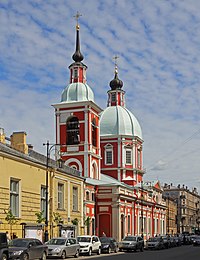
Church of St. Panteleimon, built in 1735-39, is one of the oldest in St. Petersburg.
Veneration in Western Europe
At the Basilica of the Vierzehnheiligen near Staffelstein in Franconia, St. Pantaleon is venerated with his hands nailed to his head, reflecting another legend about his death.After the Black Death of the mid-14th century in Western Europe, as a patron saint of physicians and midwives, he came to be regarded as one of the fourteen guardian martyrs, the Fourteen Holy Helpers. Relics of the saint are to be found at Saint Denis at Paris; his head is venerated at Lyon. A Romanesque church was dedicated to him in Cologne in the 9th century at latest.
Italy
In Italy, Pantaleon gives favourable lottery numbers and winners in dreams.[9] A phial containing some of his blood was long preserved at Ravello.[2] On the feast day of the saint, the blood was said to become fluid and to bubble (compare Saint Januarius). Paolo Veronese's painting of Pantaleon can be found in the church of San Pantalon in Venice; it shows the saint healing a child. Another painting of Pantaleon by Fumiani is also in the same church.[2] He was depicted in an 8th-century fresco in Santa Maria Antiqua in Rome, and in a 10th-century cycle of pictures in the crypt of San Crisogono in Rome.[2] In Calabria, there is small town named Papanice, after Pantaleon. Each year on his feast day, a statue of the saint is carried through the town to give a blessing for all those who seek it.France
In France, he was depicted in a window in Chartres Cathedral.[2] In southern France there are six communes under the protective name of Saint-Pantaléon. Though there are individual churches consecrated to him elsewhere, there are no communes named for him in the north or northwest of France. The six are:- Saint-Pantaléon, in the Lot département, Midi-Pyrénées
- Saint-Pantaléon, in the Vaucluse département, Provence - a wine-growing village
- Saint-Pantaléon-de-Lapleau, in the Corrèze département, Limousin
- Saint-Pantaléon-de-Larche, in the Corrèze département, at the border of Périgord and Quercy
- Saint-Pantaléon-les-Vignes, in the Drôme département, Rhône-Alpes – a wine-growing village that is part of the Côtes du Rhône vinyard region
- Saint-Pantaléon, in the Saône-et-Loire département, Bourgogne – administratively linked to Autun, bishopric see
Eponym
- The Russian battleship Potemkin was renamed Panteleimon by her crew after the mutiny of 1905
- St. Pantaleon is the eponym of the character Pantalaimon in Philip Pullman's His Dark Materials series of novels
References
- ^ http://www.catholic.org/saints/saint.php?saint_id=373
- ^ a b c d e f Butler, Alban (2000). Butler's Lives of the Saints. Continuum International Publishing Group. p. 217.
- ^ a b Liguori, Alphonsus (1888). "SS. Hermolaus, Priest; and Pantaleon, Physician". Victories of the Martyrs. London: Benziger Brothers. pp. 308–311.
- ^ Löffler, Klemens (1911). "St. Pantaleon". The Catholic Encyclopedia 11. Robert Appleton Company. Retrieved 8 July 2010.
- ^ Graecarum affectionum curatio, Sermo VIII, "De martyribus", published in Migne, Patrologia Graeca, LXXXIII 1033
- ^ De aedificiis Justiniani (I, ix; V, ix)
- ^ Bollandists' Acta Sanctorum for November, II, 1, 97
- ^ "Saint Panteleimon". The Walters Art Museum.
- ^ Jockle, Clemens (1995). Encyclopedia of Saints. London: Alpine Fine Arts Collection. p. 349.
- Life of St Panteleimon with a portrait in the traditional icon style[dead link]
- Paul Gerhard Aring (1993). "Pantaleon". In Bautz, Traugott. Biographisch-Bibliographisches Kirchenlexikon (BBKL) (in German) 6. Herzberg: Bautz. cols. 1485–1486. ISBN 3-88309-044-1.
- Catholic Encyclopedia: Saint Pantaleon
- Paul Guérin, Les Petits Bollandistes: Vies des Saints, (Bloud et Barral: Paris, 1882), Vol. 9 Hagiography for children (in English)
- Article in OrthodoxWiki
- St. Panteleimon
- Gandzasar Monastery, Nagorno Karabakh
More Saints
Saint Feast Days by Month
Popular Saints
Rank
Saint
27.
St. Luke
Luke, the writer of the Gospel and the Acts of the Apostles, has been identified with St. Paul's "Luke, the beloved physician" (Colossians 4:14). We know few other facts about ... continue reading | shop28.
St. John the Baptist
John the Baptist was the son of Zachary, a priest of the Temple in Jerusalem, and Elizabeth, a kinswoman of Mary who visited her. He was probably born at Ain-Karim southwest of Jerusalem ... continue reading | shop29.
St. Maria Goretti
Born in Corinaldo, Ancona, Italy, on October 16 1890; her farmworker father moved his family to Ferrier di Conca, near Anzio. Her father died of malaria and her mother had to struggle to ... continue reading | shopSaint of the Day

St. Alphonsus Marie Liguori
Bishop, Doctor of the Church, and the founder of the Redemptorist Congregation. He was born Alphonsus Marie Antony John Cosmos Damien Michael Gaspard de Liguori on September 27,1696, at Marianella, ... continue readingMore Saint of the Day
Female Saints

St. Catherine of Siena
The 25th child of a wool dyer in northern Italy, St. Catherine started having mystical experiences when she was only 6, seeing guardian angels as clearly as the people they protected. She became a Dominican tertiary when she was 16, and continued to have visions of ... continue readingMore Female Saints
More Female Saints
Angels

St. Michael the Archangel
St. Michael the Archangel - Feast day - September 29th The name Michael signifies "Who is like to God?" and was the warcry of the good angels in the battle fought in heaven against satan and his followers. Holy Scripture describes St. Michael as "one of the chief ... continue reading
St. Gabriel, the Archangel
The name Gabriel means "man of God," or "God has shown himself mighty." It appears first in the prophesies of Daniel in the Old Testament. The angel announced to Daniel the prophecy of the seventy weeks. His name also occurs in the apocryphal book of Henoch. He was the ... continue readingSaints Fun Facts

St. Artaldus
Artaldus (also called Arthaud) was born in the castle of Sothonod in Savoy. At the age of eighteen, he went to the court of Duke Amadeus III, but a year or two after, he became a Carthusian at ... continue reading
St. Lorenzo Ruiz
Lorenzo Ruiz is the first Filipino saint. He is also the first Filipino martyred for the Christian Faith. Lorenzo Ruiz was a layman, married, and had two sons and a daughter. Born in Binondo, Manila, ... continue readingMore Saints
Christian Saints & Heroes

Memorial of Ignatius of Loyola, Priest: We are all Called to Become Saints
By Deacon Keith A FournierOver the centuries, the Jesuits have been relied upon by Popes as trustworthy, heroic soldiers for Jesus Christ and His Church. Yes, there have been times when the company seemed to lose its fervor. However, Jesus Christ the King has always sent His Spirit to ... continue reading
More Christian Saints & Heroes





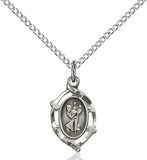

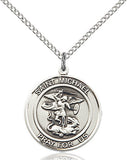
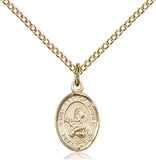
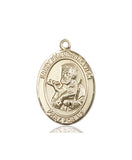

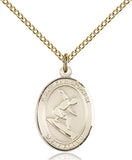
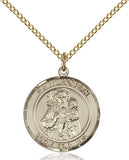
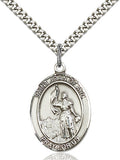
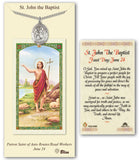





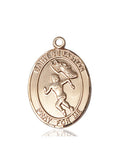








































No comments:
Post a Comment
Dear Friends....
Please share with us your comments of our
Daily Reflections.
How has it touched you?
How has it helped you in your Lenten journey?
You may post your comment here
or confidently share with me
@
E-Mail it to us at
lasaletteshrinedirector@gmail.com